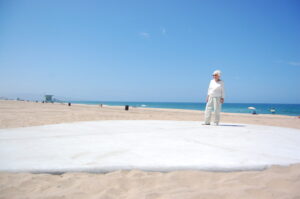Spring and S
1. There’s less competition
The months of May, June, July, and August make up 40 percent of existing home sales, while January and February account for less than 6 percent. For sellers, that’s not-so-hot news. But buyers should rejoice. Buying in the winter knocks out a large chunk of the competition, allowing you to be a bit more selective with your home purchase. Although more summer inventory means there’s a better chance of finding your dream home, your chances of successfully buying any home are higher when it’s chilly. Fewer buyers mean fewer all-cash, over-askingoffers—making your traditionally financed offer more appealing.
2. Sellers are motivated—and willing to make a deal
Most likely, sellers listing their home during the winter because they have to, which gives buyers the upper hand. Many sellers are looking to get out fast and will be more willing to work with you. You’ll also want to keep an eye on each home’s cumulative days on market, which you’ll find on the home’s listing details page. It’s possible that the house has been lingering on the market, which will give you more leverage to land a fantastic home for a fraction of the price you would have paid six months earlier. If you are buying in the winter, you may want to target houses that have been on the market for a few months, because you might just find a seller who is more motivated to accept a lower offer. But remember: Just because a seller is not eager doesn’t necessarily mean you should dramatically lowball or make unreasonable demands because you could sabotage yourself. Instead, work with your agent to determine an appropriate negotiation strategy.
3. You can put the house through its paces
In most climates, winter puts stress on the home. That gives you the perfect opportunity to evaluate the property under the worst conditions possible. A home that might seem ideal during the temperate spring could look entirely different during the winter. You’ll never know how drafty the windows may be or how weak the insulation is when previewing a house in the spring and the summer, and buying a house in the winter allows you to put the furnace to the test. You’ll also get a better idea of what you’re in for on the home’s worst days: Do you spot ice dams on the roof? How does the home look with barren trees and shrubs? This is your chance to be extra-critical of a house you’re thinking of committing to it.
4. Hiring movers is usually easier
If you’ve ever moved during the winter, you know it’s not always pleasant to move all of your possessions in inclement weather. But the logistics are simplified when you aren’t competing with a hundred other moving households. Movers aren’t booked solid like in the spring and summer months, so it’s not a bad time to move. You might even be able to negotiate a lower price because of the lessened demand. Just make sure to be flexible and allocate a few days’ window for moving in case you have to reschedule.
5. You can enjoy last-minute tax savings
If you’re purchasing your first home, buying in the winter gives you a few extra months of potential tax deductions. The holidays are your last chance to buy a home and use it as a write-off for your 2018 taxes. Depending on your local laws, you can deduct mortgage interest, taxes and points—although you should consider talking to a professional before getting too excited. The new tax law might affect your mortgage interest deduction.
6. Homes close faster
In the busy spring and summer months, your mortgage broker might be backed up days or even weeks. This can be beyond frustrating when your closing is planned around your lender’s schedule. But things slow down by 25 percent to 30 percent during the holidays, so you’ll be able to close your loan much faster.




